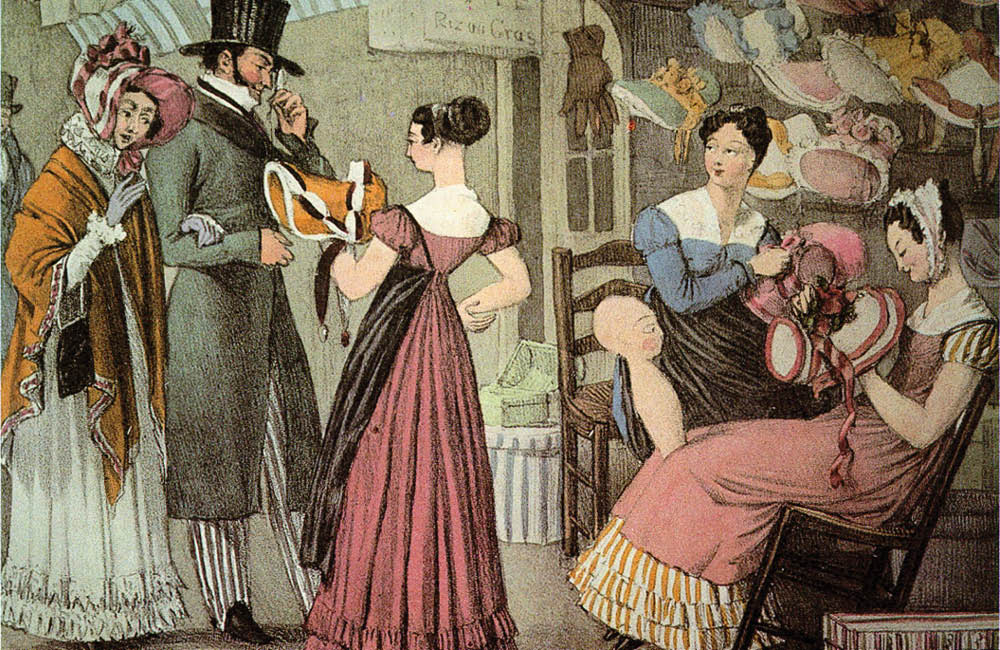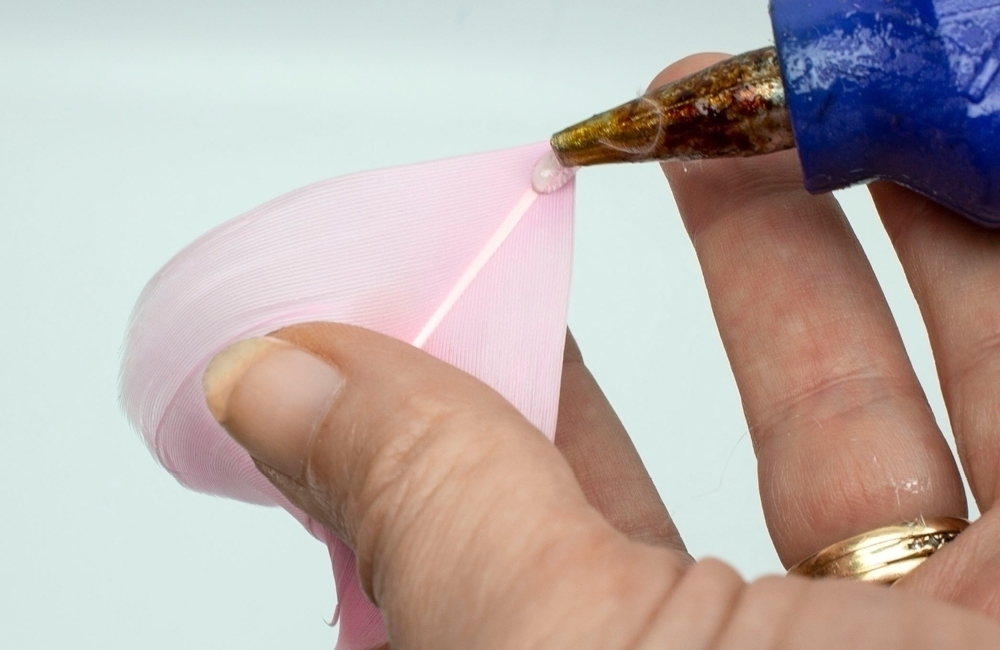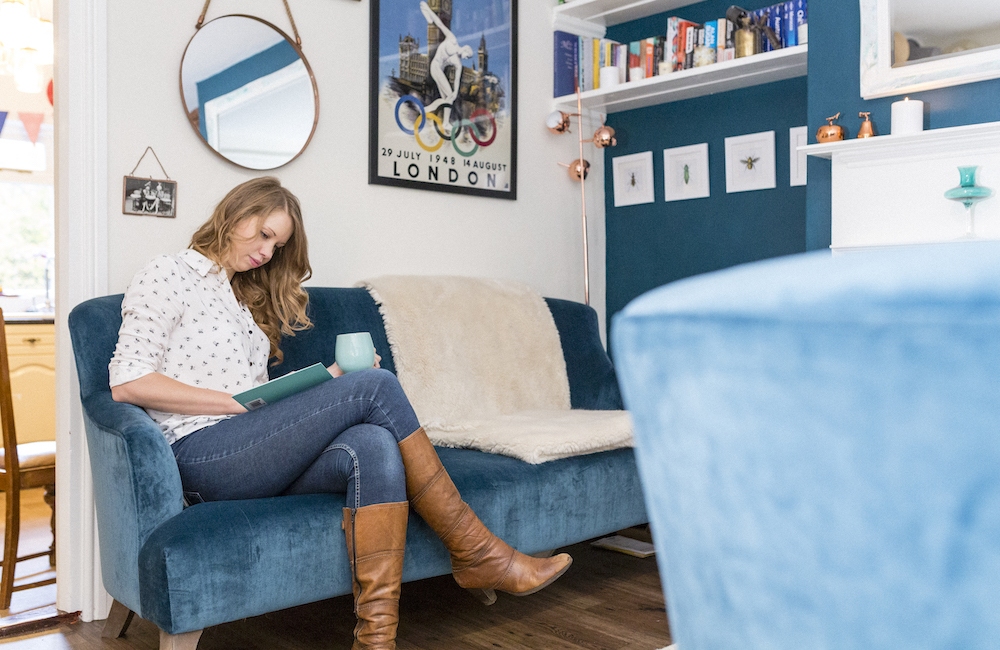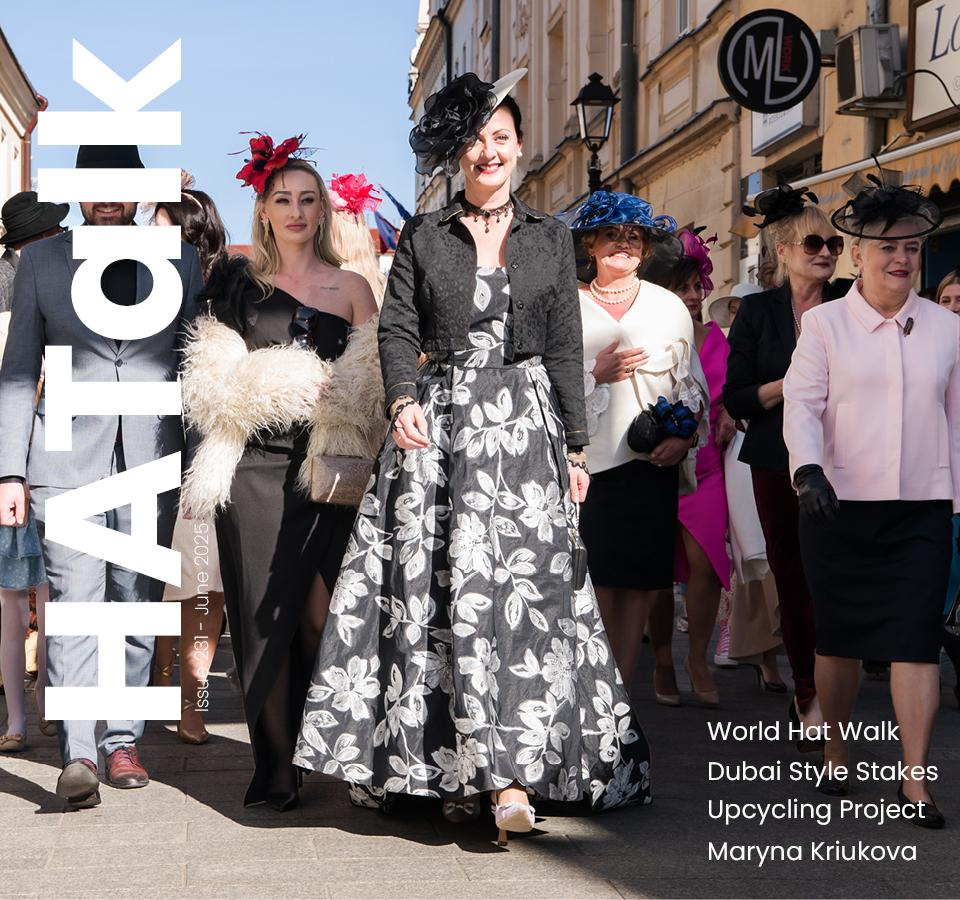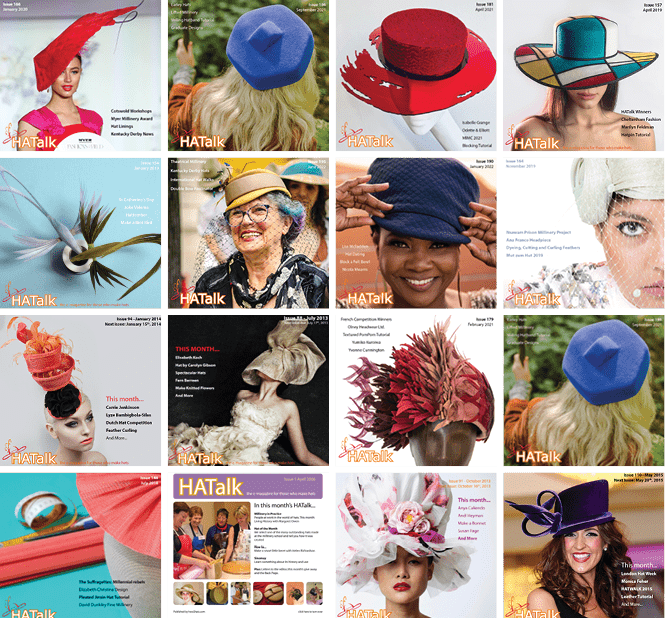Blog / Getting Started with Hat Blocks
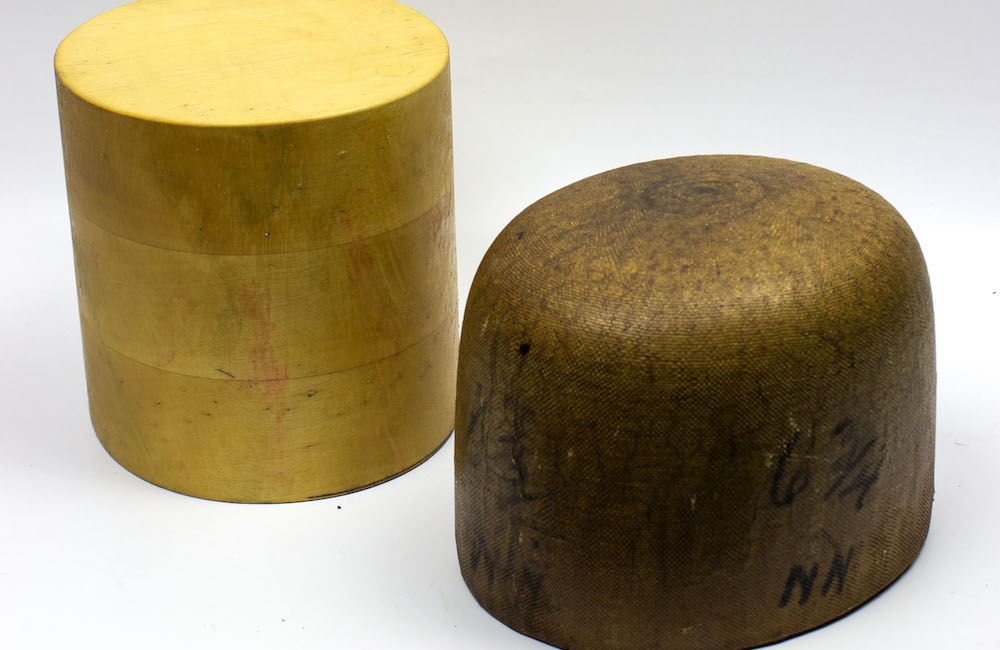
Getting Started with Hat Blocks
What are Hat Blocks?
So, you want to make hats. Where to begin? There are an array of pre-made hat bases available in a variety of materials so, for many people, this may be where to start. Pre-made bases allow you to play with different trimming techniques and are a great entry point to hat making, especially as it can be difficult to find millinery educators who teach hat blocking in some areas. Plus, the supplies required can be expensive. But one day, you may want to make your own bases and that’s where hat blocks come in.
Hat blocks are wooden forms carved into the shape of a hat. Hat making materials, like sinamay or felt, are stretched over these blocks to create a hat. There are also aluminum hat blocks, but these are generally only used for larger scale hat manufacturing using industrial pressing machines.
Wooden hat block carving is an art form in itself, with only a limited number of craftsmen making them. This does mean that they can be quite expensive to purchase and, as many hat block makers carve blocks to order, it may take a couple of months to receive them. Europe, the United Kingdom and Australia are home to the majority of hat block makers today. Award-winning hat block maker Owen Morse-Brown, of family-run Guy Morse-Brown Hat Blocks in England, is pictured below.
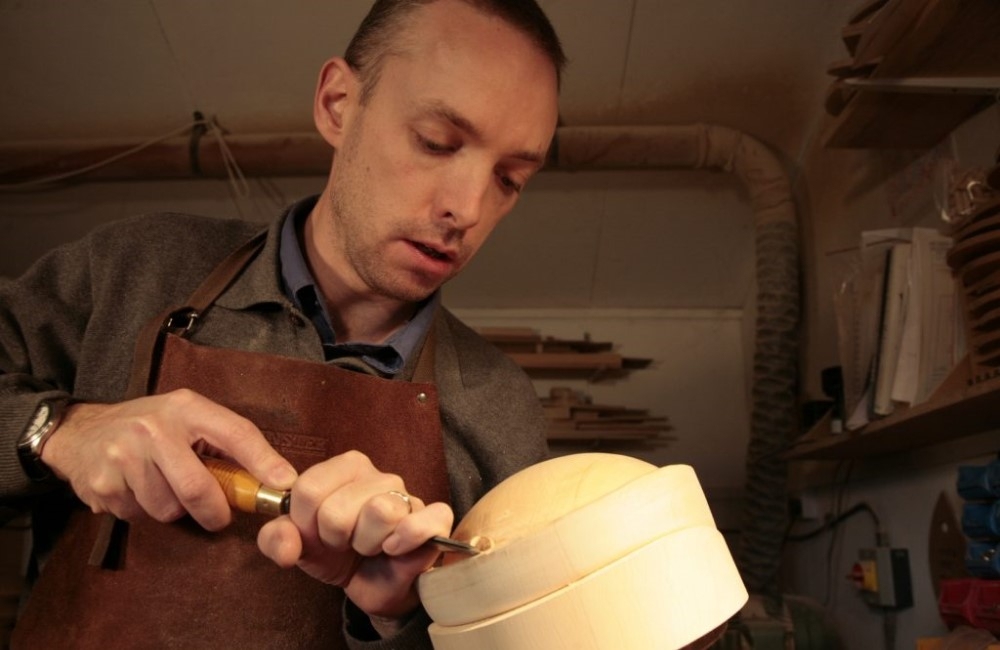
It is also possible to find vintage hat blocks on online auctions and collectible markets. Some of these vintage blocks have gorgeous shapes not readily found today. Purchasing vintage blocks can be a slightly cheaper way to start your hat block collection. They are also fun to look at and study for design ideas.
You can also make your own hat blocks. To start with, simply look around your home for shapes that could be used as molds (think salad bowls and side plates). You can also block simple fascinator bases with inexpensive Styrofoam heads, covered with plastic. Some people also use adhered layers of industrial foam sheeting, which are carved and coated to create one of a kind shapes for blocking. There are health risks associated with carving these types of materials, however, so make sure to get proper advice and instructions from an expert before trying this at home!
Buying Hat Blocks
When you are ready to order your first new hat block, there are a number of variables to consider. What kind of hats do you want to make? For men or women? What size should you order? What shapes do you need? Some hat block makers offer starter kits or bundles. If you aren’t ready to spend that much, though, there are some basic shapes that are useful to have.
Crown Blocks
A crown block is the most common block. It is useful to have a pair of oval crowns, one with a rounded top like the shape of a head and the other with a flat top. But, if you can only get one block, go with a rounded crown. It will have a flat bottom which can be blocked as well!
Brim Blocks
Brim blocks come in a variety of shapes and sizes. Having a large and a small size available is a good place to start. A cloche brim block is a nice smaller option, while a larger cartwheel brim can be utilized for a variety of shapes.
Blocking Accessories
A hat block stand will keep your work up off the table and make blocking much easier. Collars to fit your crowns and brims will help you to make the extension for sewing the two pieces together.
As for size, most women wear a 22”- 23” (56cm – 58.5 cm) hat, so a block in that range should cover a majority of clients. Or, if making for yourself, measure your own head.
Don’t spend a fortune at first. Get what you need to start or find a good deal on a vintage piece. Collecting and purchasing hat blocks can be addicting, so start slow. With a little imagination, you will be able to use your hat blocks to create a variety of shapes beyond the original one intended.
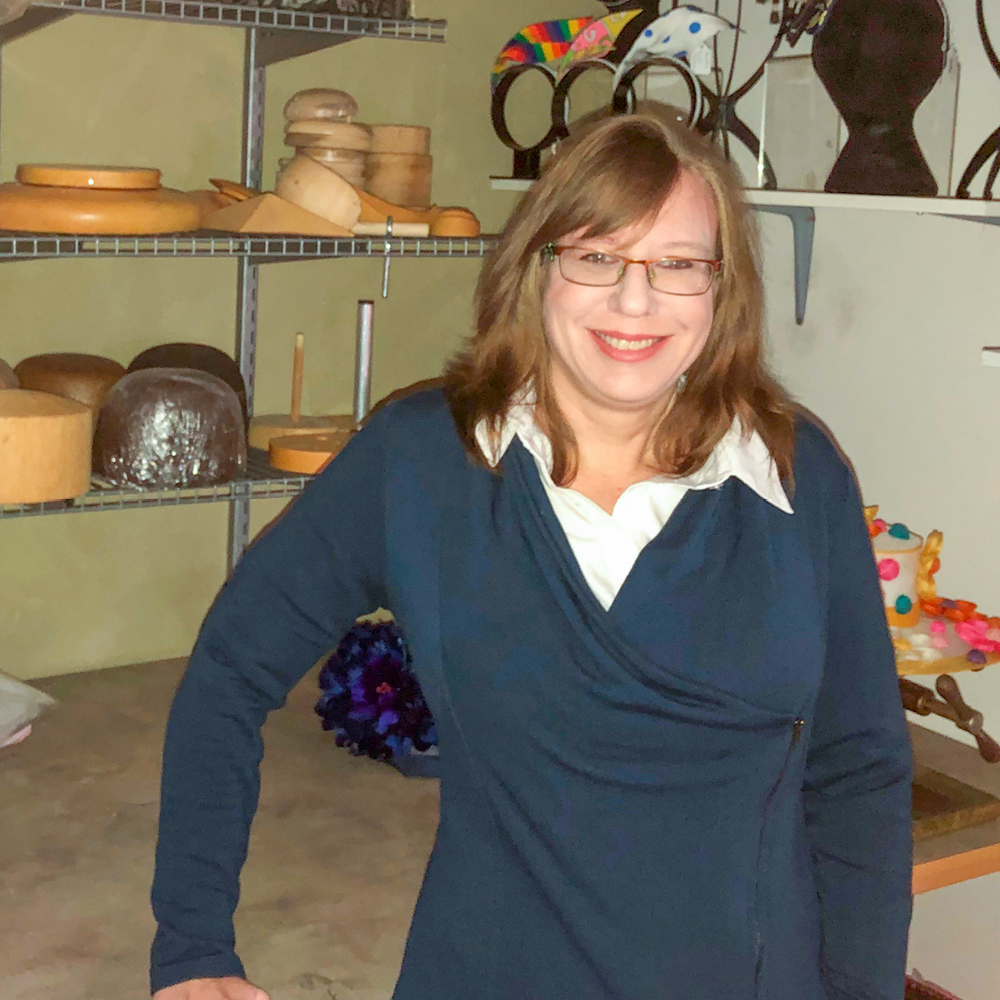
About the Author
Amy Fowler is the creator of the bespoke, California-based Millinery by Amy Fowler label. She also runs Humboldt Haberdashery, an online millinery supplier.
See Amy’s full bio HERE.
Popular Articles
Latest e-Magazine
Featured Supplier

Getting Started with Hat Blocks
What are Hat Blocks?
So, you want to make hats. Where to begin? There are an array of pre-made hat bases available in a variety of materials so, for many people, this may be where to start. Pre-made bases allow you to play with different trimming techniques and are a great entry point to hat making, especially as it can be difficult to find millinery educators who teach hat blocking in some areas. Plus, the supplies required can be expensive. But one day, you may want to make your own bases and that’s where hat blocks come in.
Hat blocks are wooden forms carved into the shape of a hat. Hat making materials, like sinamay or felt, are stretched over these blocks to create a hat. There are also aluminum hat blocks, but these are generally only used for larger scale hat manufacturing using industrial pressing machines.
Wooden hat block carving is an art form in itself, with only a limited number of craftsmen making them. This does mean that they can be quite expensive to purchase and, as many hat block makers carve blocks to order, it may take a couple of months to receive them. Europe, the United Kingdom and Australia are home to the majority of hat block makers today. Award-winning hat block maker Owen Morse-Brown, of family-run Guy Morse-Brown Hat Blocks in England, is pictured below.

It is also possible to find vintage hat blocks on online auctions and collectible markets. Some of these vintage blocks have gorgeous shapes not readily found today. Purchasing vintage blocks can be a slightly cheaper way to start your hat block collection. They are also fun to look at and study for design ideas.
You can also make your own hat blocks. To start with, simply look around your home for shapes that could be used as molds (think salad bowls and side plates). You can also block simple fascinator bases with inexpensive Styrofoam heads, covered with plastic. Some people also use adhered layers of industrial foam sheeting, which are carved and coated to create one of a kind shapes for blocking. There are health risks associated with carving these types of materials, however, so make sure to get proper advice and instructions from an expert before trying this at home!
Buying Hat Blocks
When you are ready to order your first new hat block, there are a number of variables to consider. What kind of hats do you want to make? For men or women? What size should you order? What shapes do you need? Some hat block makers offer starter kits or bundles. If you aren’t ready to spend that much, though, there are some basic shapes that are useful to have.
Crown Blocks
A crown block is the most common block. It is useful to have a pair of oval crowns, one with a rounded top like the shape of a head and the other with a flat top. But, if you can only get one block, go with a rounded crown. It will have a flat bottom which can be blocked as well!
Brim Blocks
Brim blocks come in a variety of shapes and sizes. Having a large and a small size available is a good place to start. A cloche brim block is a nice smaller option, while a larger cartwheel brim can be utilized for a variety of shapes.
Blocking Accessories
A hat block stand will keep your work up off the table and make blocking much easier. Collars to fit your crowns and brims will help you to make the extension for sewing the two pieces together.
As for size, most women wear a 22”- 23” (56cm – 58.5 cm) hat, so a block in that range should cover a majority of clients. Or, if making for yourself, measure your own head.
Don’t spend a fortune at first. Get what you need to start or find a good deal on a vintage piece. Collecting and purchasing hat blocks can be addicting, so start slow. With a little imagination, you will be able to use your hat blocks to create a variety of shapes beyond the original one intended.

About the Author
Amy Fowler is the creator of the bespoke, California-based Millinery by Amy Fowler label. She also runs Humboldt Haberdashery, an online millinery supplier.
See Amy’s full bio HERE.
